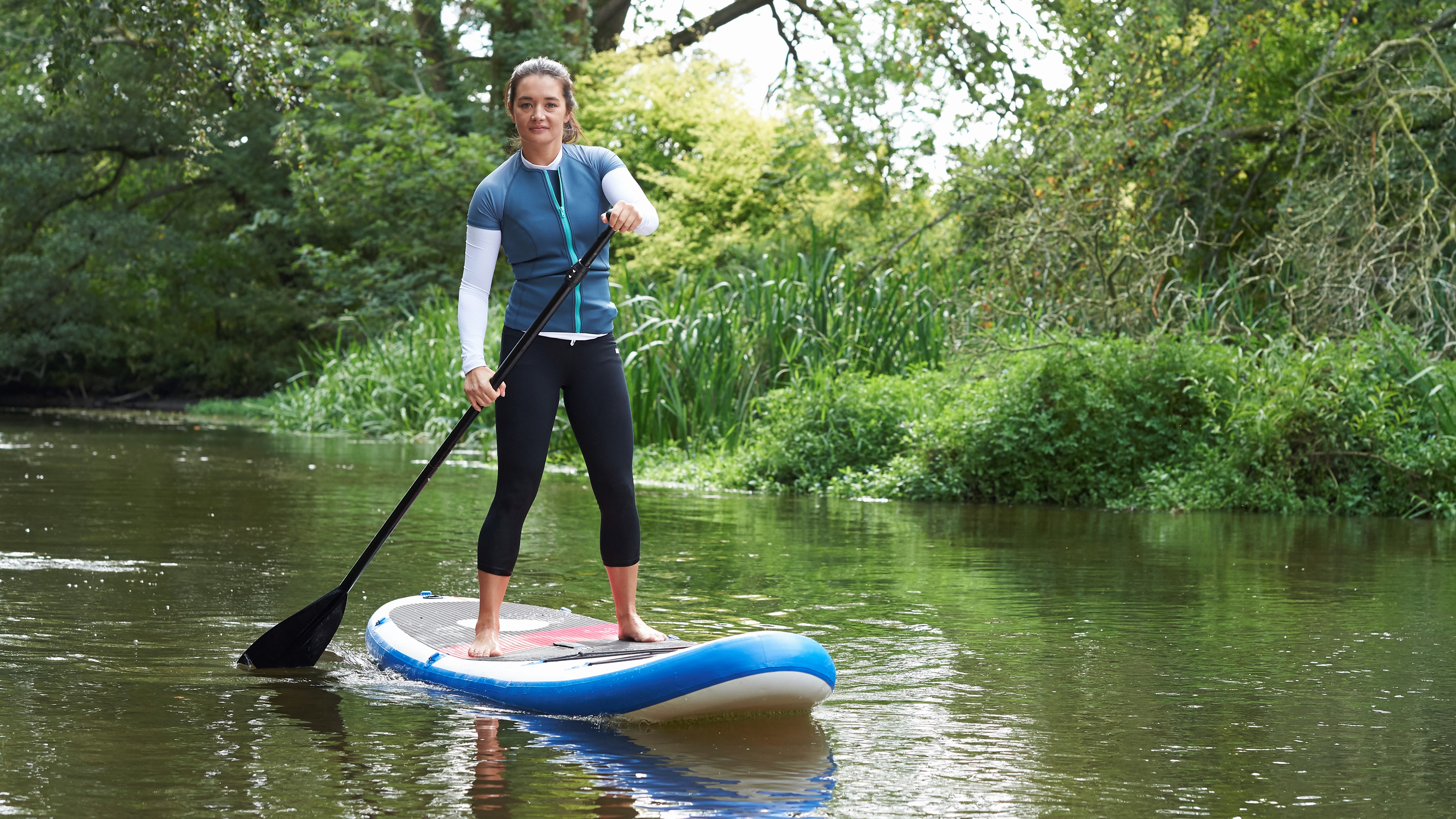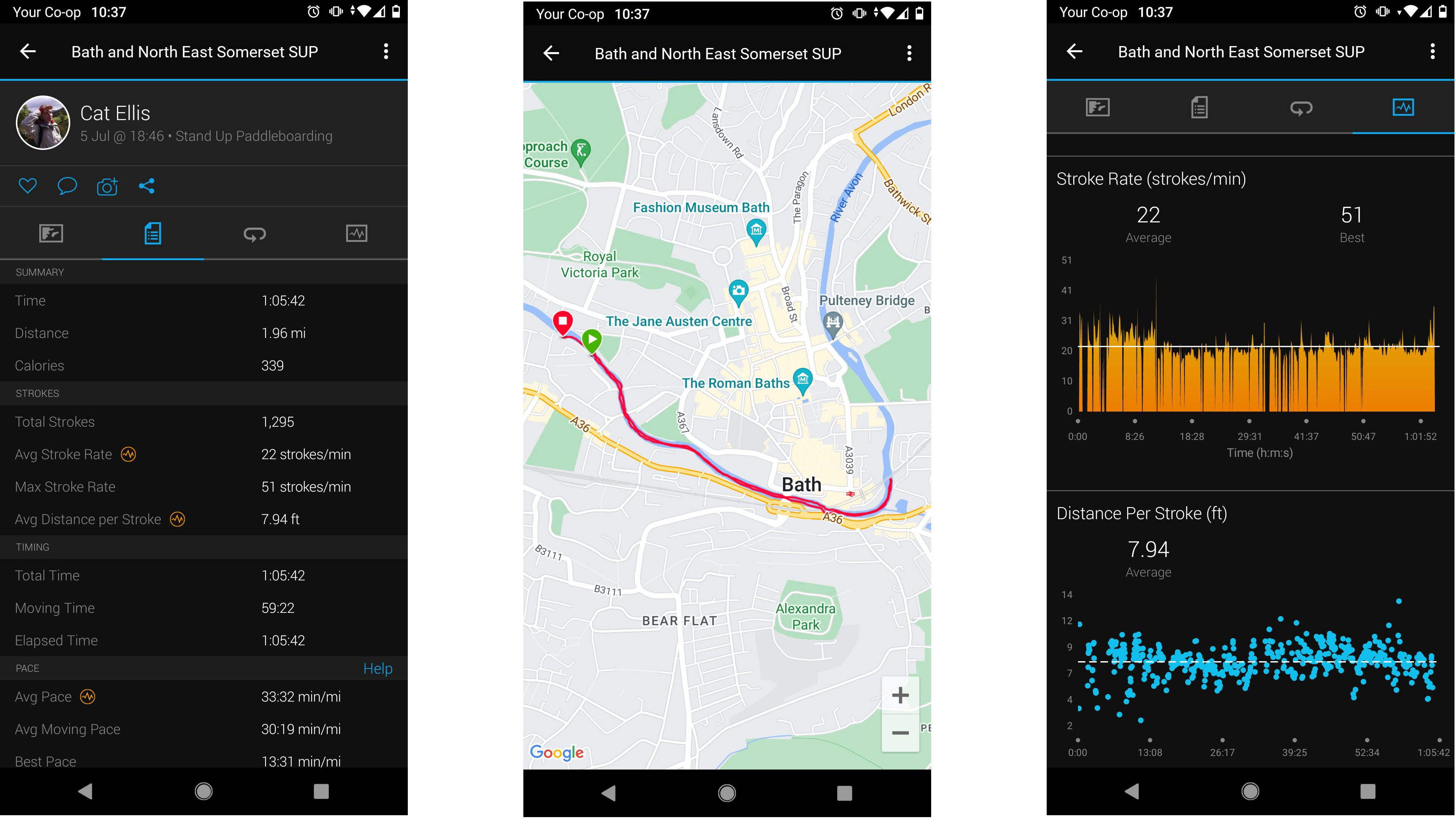
I'm currently testing the Garmin Forerunner 255 – the company's new entry-level triathlon watch – and as you'd expect, it's excellent for tracking all types of running, cycling, and swimming. After each workout you're presented with a wonderful wealth of stats to pore over and analyze, and all the data feeds into your fitness and recovery metrics in the app. But what about the less common sports?
Occasionally, my regular running club takes a break from pounding the pavements and hits the water instead for an evening of paddleboarding. We're fortunate enough to be based in Bath, UK, where we have easy access to a long, attractive stretch of canal that's just right for a spot of easy paddling.
One of my fellow club members mentioned that his ageing Forerunner had no specific mode for SUP (though there was one available to download through Garmin Connect IQ for a fee. That's not an issue the company's more recent watches though, so I scrolled through the 255's menu and selected the appropriate mode before grabbing a board.
I pretty much forgot about the watch while we paddled a mile towards the city center then back again (I'm not the most confident on a board, and was laser-focused on keeping my balance), but when I checked the stats later I was pleasantly surprised.
Specific SUP stats
I've tested a lot of fitness trackers and sports watches over the years, and even the best GPS watches often come up short when it comes to less common sports. Devices might claim to track dozens of different activities, but often the vast majority of these only monitor time and heart rate.

That's not the case with Garmin's SUP mode. Not only did the GPS track my route along the canal with impressive accuracy, it also tracked the number of strokes I made, my average stroke rate, maximum stroke rate, and average distance per stroke. That's impressive considering the movements made when paddling aren't anywhere near as regular as when you're running. You're switching positions every couple of strokes, placing your hands differently depending on whether you're kneeling or standing, and paddling backwards to make sharp turns.
It's a lot more than I was expecting, and if you're keen on SUP, the dedicated mode is far better than attempting to translate tracked steps into strokes. I'll be interested to see how it fares with rowing as well. To me, having a few tracking modes with detailed, sport-specific stats is much more valuable than 100 modes that only track heart rate (though the 255 did that too, including an embarrassing spike during a period of 'jelly legs').
All the latest inspiration, tips and guides to help you plan your next Advnture!
- Best Garmin watches: find your perfect training partner

Cat is the editor of Advnture, She’s been a journalist for 15 years, and was fitness and wellbeing editor on TechRadar before joining the Advnture team in 2022. She’s a UK Athletics qualified run leader, and in her spare time enjoys nothing more than lacing up her shoes and hitting the roads and trails (the muddier, the better), usually wearing at least two sports watches.
